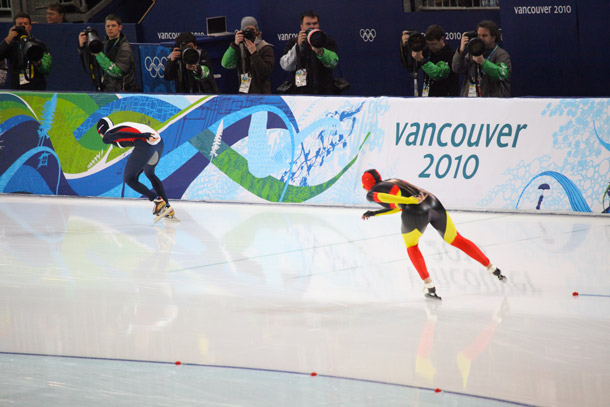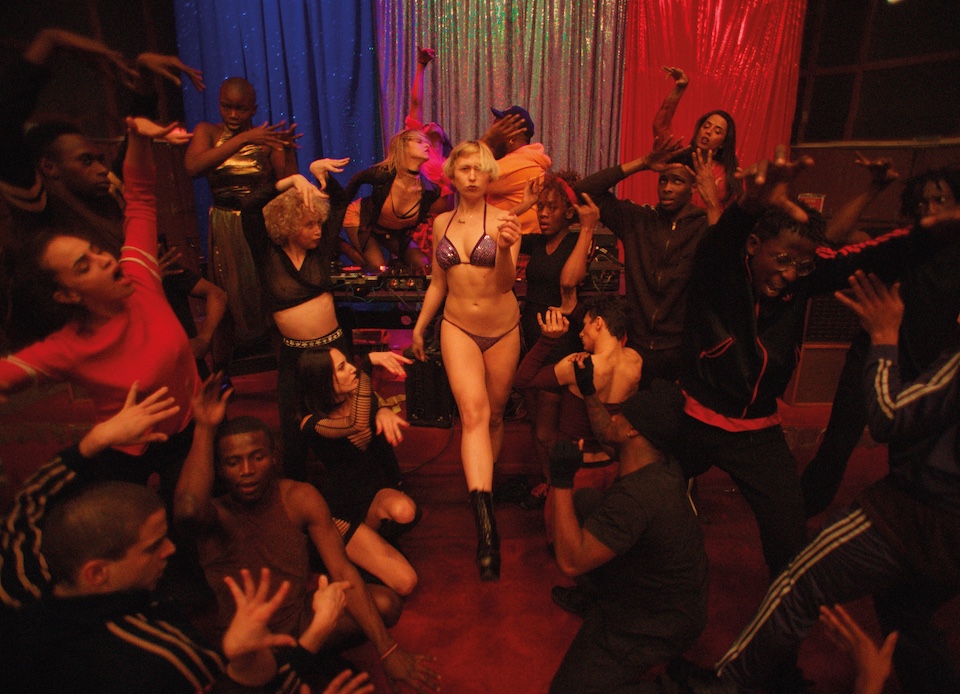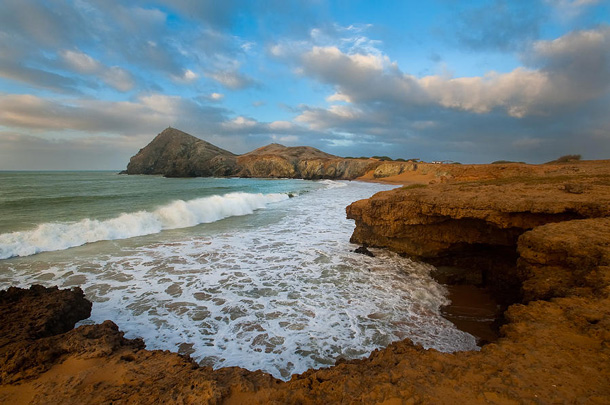A deep dive into the world of underwater rugby.
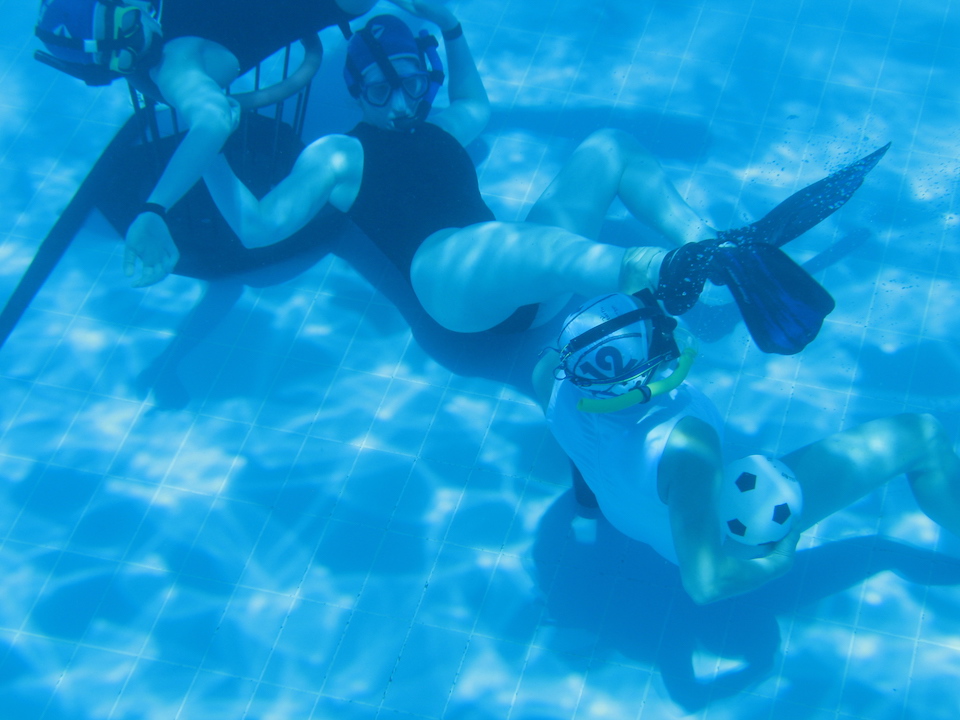
Those familiar with the movie Dodgeball will recognise ESPN 8 ‘The Ocho’ as the then-fictional TV network (it has since become a real thing), proudly broadcasting the finest in seldom-seen sports from around the globe. “If it’s almost a sport,” they boast, “We’ve got it here.” With that as their criteria, it’s hard not to imagine the network’s producers practically choking on their own drool after learning about underwater rugby.
The product of a demanding, if not bizarre, fitness regimen of German diving clubs during the early 1960s, underwater rugby is something of a sporting alphabet soup. It draws on elements of water polo and basketball, though oddly enough, hardly resembles rugby. The “underwater ball game” pits six players from either team against one another in a bid to get a ball into an underwater basket.
The game initially floundered. For over a decade, it existed as an underdeveloped idea for a sport that was more of a warm-up for aquatic athletes than anything remotely competitive. In a bid to change this, Dr Franz Josef Grimmeisen, the game’s chief ambassador at the time, tried to promote the idea abroad. He offered free demonstrations to the French and Soviet contingents of the Confédération Mondiale des Activités Subaquatiques (CMAS) – The World Underwater Federation – but garnered little interest.
Lifting the trophy was a feat in its own right, but doing so as an international outfit that had only been to two previous World Cups made the accomplishment all the more impressive.
Grimmeisen persisted in his quest to share the joys of underwater rugby with his European neighbours. Through his efforts, the sport enjoyed a much warmer reception in Scandinavia during the early 1970s and quickly caught on in the rest of Europe soon thereafter. By 1978, the sport was officially recognised by the CMAS, and by 1980, it had become a global competition with its first world championship held in May the same year.

Having existed less than 40 years on the international stage, underwater rugby is, in many ways, still an underdog story. That’s a fact that would delight producers at any obscure sports network, on the basis that jai alai and footgolf have probably had their moment in the indie sports sun. But if it’s truly a story that celebrates the improbable they’re after, why look any further than the home of magical realism?
Related: Developing sports in Colombia
Last month, the Colombian men’s team made history by defeating Norway 2-0 in the finals to claim their first-ever title at the underwater rugby world championships in Austria. Lifting the trophy was a feat in its own right, but doing so as an international outfit that had only been to two previous World Cups made the accomplishment all the more impressive. After finishing third in the 2015 World Championships, the men’s team took a step back, finishing fourth in the 2017 Champion’s Cup. “That was an eye-opening experience,” says Carolina Correa, team manager for both the men’s and women’s teams. “We realised that if we were going to progress and really be able to compete on the level of the European teams we were facing, we were going to need to make tactical and technical changes.” That’s just what they did.
Employing a series of biometric studies and other scientific investigations, the men’s side changed their approach to training as well as their subsequent in-game tactics. The result was a world-class Colombian side able to contend with competition whose experience in global championships dwarfed their own.
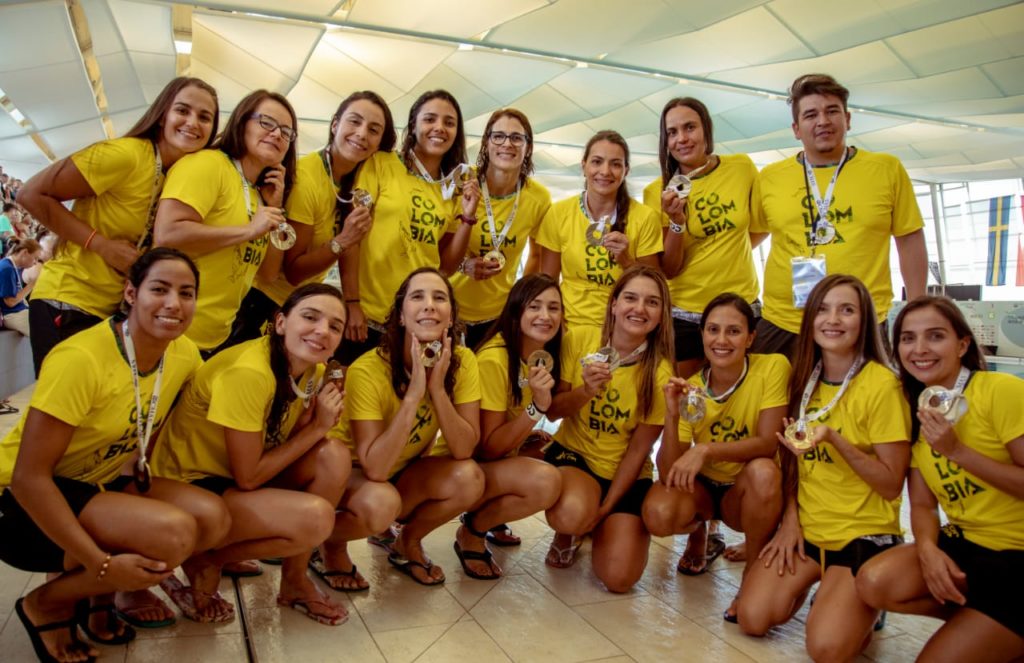
Yet, for all their training, the men’s team’s triumph almost never came to be. Just months prior to the championship’s July start date, it looked like they would miss out on the competition altogether. Lacking the resources to fund their travel expenses for the cup final, the men’s team spent the majority of the first half of this year scrambling to scrape together cash. A May crowdfunding campaign yielded USD$1,665 – a sum perhaps enough for one player, but merely 3% of the total needed to cover everything.
Having existed less than 40 years on the international stage, underwater rugby is, in many ways, still an underdog story.
To make ends meet, the lads had to get resourceful, doing everything from selling food and other wares to putting on raffles. “What was interesting was that for all of their efforts to raise money externally, the players covered the majority of their expenses themselves or through the help of close family and friends,” said Correa. “I think there’s a valuable lesson there about the importance of community.”
The Colombian women’s team faced similar challenges. Since underwater rugby is not an official Olympic sport, funding from the country’s governing sports bodies. In-kind contributions and sponsorships from Bogotá’s underwater rugby league and a handful of private organisations throughout the country helped the ladies cobble together a fraction of what they needed. But in the end, they too relied on themselves and the goodwill of friends and family to cover the majority of the bill.
The women’s team’s investment in themselves paid off, though not quite to the extent of the men. They did not concede a single goal, but ultimately fell to eventual champions Norway in the semi-finals. The women’s team then secured a place on the podium with a 2-0 win over Finland in the consolation match. That was good enough for a third-place finish, a result to which the female selección has grown accustomed. They have placed third in three of the previous five competitions, dating back to the seventh world championships in 2003.
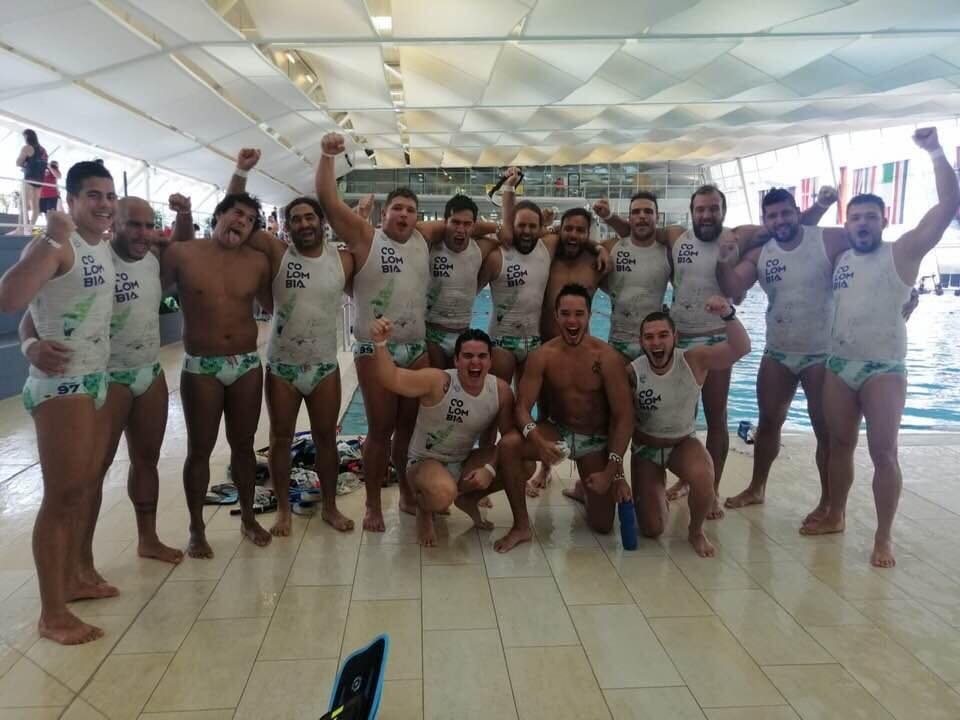
Perhaps more impressive than their consistency over time, however, has been their ability to succeed in the face of uncertainty. In addition to their financial challenges, the women’s team members are spread between Bogotá, Medellín, Cali, and Pereira, a fact that severely complicated training logistics and forced 75% of the team to travel elsewhere each week in the run-up to the finals in Austria. As if that weren’t enough, the side switched coaches between the 2015 and 2019 championships, forcing the team’s members to abandon tactics they’d grown accustomed to and adopt a completely different style of play. Their ability to morph from the third-place version of themselves in 2015 to a team that came excruciatingly close to a place in the finals is telling. “It’s clear we’re on the right track,” says Correa, “we just have to keep plugging away like we have been.” If they do, the gold medals that have eluded them won’t be far behind, and this once-obscure sport might make quite the splash in Colombia in years to come.


